History, meaning and kinds of crab (kani)
Various crab and crab dishes in Japan!?
Many Japanese especially like a crab among seafood, and often eat it by boiling or sushi. It is said that Japanese are very quiet while eating a crab since they concentrate on getting the meat out of the crab. They began to eat it from about 600 A.D. or 700 A.D. according to the Manyoshu which was the oldest collection of poems called tanka.
There are about 5,000 kinds crabs in the world, and are about 1,000 kinds crabs in Japan. Only 4 kinds crabs are eaten in Japan, snow crab, king crab (red king crab), blue king crab and horsehair crab.
A snow crab called Zuwai-gani is the most popular crab in Japan. Its legs are slender, and called Suwae in Japanese. Suwae turned into Zuwai year and year, and became Zuwai-gani. Gani means a crab in Japanese. The price of it is about 5,000 to 8,000 yen per kilogram (about 50 dollars to 80 dollars per 2.2lb). The best season of it is from November to March.
Snow crabs are caught all over the Japan, and called by different names depending on their producing area. Snow crabs caught in Kyoto, Hyogo or Sanin area are called Matsuba-gani. They caught in Fukui prefecture are called Echizen-gani. They caught in Ishikawa prefecture are called Kobako-gani. These crabs are premium branded crabs in Japan.
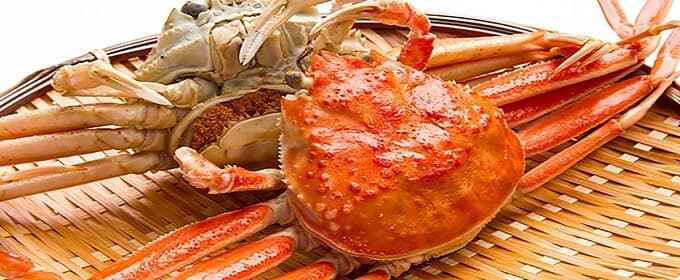
A king crab (red king crab) is called Taraba-gani in Japan. Tara means a cod fish, ba means place or area. This crab is called Taraba because it is often caught in same area of codfish. The feature of it is six legs and spiny shell. The price of it is about 6,000 to 10,000 yen per kilogram (about 60 dollars to 100 dollars per 2.2lb), and is more expensive than the price of snow crab. The best season of it is twice a year, from April to June and from November to February.
The crab looks like a king crab is called Abura-gani. This crab resembles a king crab, but is different in that its shell is less spiny shell. The taste of it is not as tasty as the taste of king crab though both of crabs look alike. Abura means oil in Japan, Abura-gani is not oily. This crab is not well known in Japan since it was discovered in recent years.

A blue king crab is called Hanasaki-gani in Japan. Hanasaki is derived from Hanasaki fishing port in Nemuro city of Hokkaido prefecture. This crab is not very famous in Japan because it is caught in only east sea of Hokkaido prefecture. This crab is mainly sold in Hokkaido, but it is sold in other area little by little because of developing technology of transportation.
A blue king crab in Japan has red spiny shell and legs though its name has blue. This crab is meatier than a king crab. The taste of it is like shrimp more than other crabs. The price of it is about 3,000 to 7,000 yen (about 30 dollars to 70 dollars per 2.2lb). The price of it is reasonable price than king crab and snow crab because it is not very famous and it is imported from Russia. The best season of it is summer, from July to September.
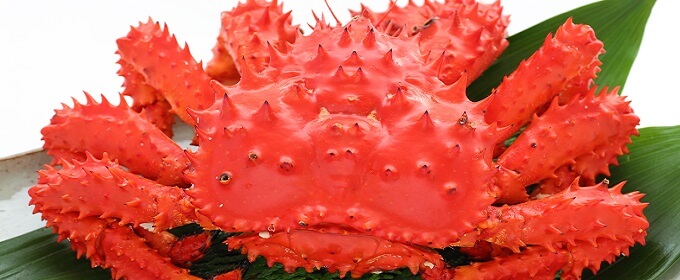
A horsehair crab is called Ke-gani in Japan, Ke also means hair in Japan. The meat of it is less than other crabs, but the innards of it called crab miso or kani miso is more than other crabs. The taste of it is rich and creamy. Drinking sake by carapace after eating the innards is called Kora-zake. It is also delicious since sake has richness and flavor of crab miso. Many Japanese like it though many foreigners dislike it because of its looks and taste.
The price of horsehair crab is about 5,000 to 7,000 yen (about 50 dollars to 70 dollars per 2.2lb). This price is higher year and year because the catch of it is decreasing and the rule about not catching it less than 8 cm (about 3 inches). The best season of it is from December to February though people can eat it throughout the year.
The crab looks like a horsehair crab is called Kuri-gani. It is different in that its hair is little less than horsehair crab. The taste of it is not as tasty as horsehair crab, and its innards are less than horsehair crab. Kuri means chestnut in Japan, Kuri-gani is not sweet but hairly like chestnut. This crab is not well known in Japan since the catch of it is small.
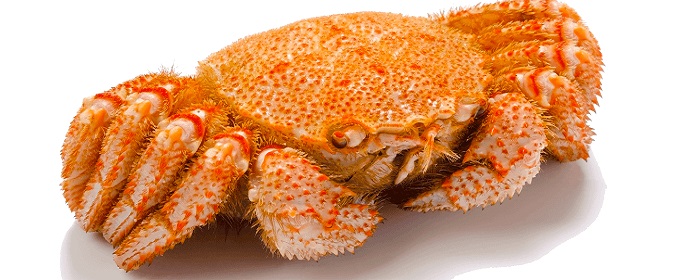
Sushi with crab is the most popular crab dish in Japan. There are various crab sushi dishes, nigiri (hand-formed sushi), gunkan-maki (battleship roll) with innards, gunkan-maki with roe, crab roll sushi, pressed sushi and more. A boiled whole crab is also a popular crab dish as well as sushi. Japanese cut by kitchen scissors, and eat as it is or with soy sauce or ponzu sauce which consists soy sauce and citrus juices.
Kani-shabu is also boiled crab dish, but is different in boiling legs and vegetables one by one by oneself. This dish is also different in dipping them into the boiled water with tangle seaweed. This dish changes Kani-zosui after boiling them. Kani-zosui consists rice, eggs, residual incidents and residual juice obtained after boiling crabs. Kani-shabu is popular among some Japanese because of controlling the degree of boiling and Kani-zosui.
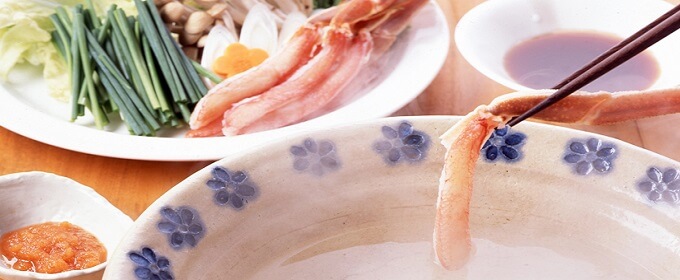
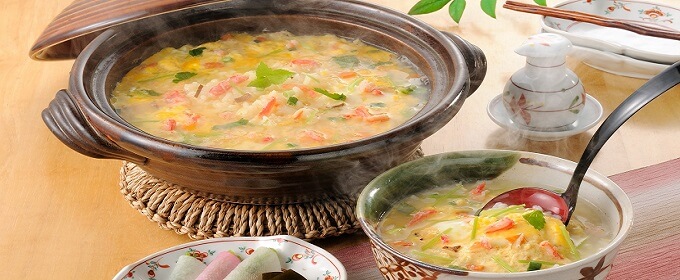
In addition, there are various crab dishes, grilling crab, deep-fried crab called tempura, hot pot with crab, raw crab called Kani-no-arai. Grilling crab with little sake is often eaten as it is or with soy sauce, lemon juice or citrus juice. Tempura is lightly-battered seafood and vegetables that are deep fried. A crab tempura is often eaten with salt or tentsuyu which is a sweet seasoning sauce for tempura. A crab is sometimes deep-fried whole without breading or batter if it is small.
A hot pot with crab is Japanese stew called Kani-nabe. This stew has much flavor of crab because the soup consists crab shell instead of broth or fish stock. Kani-nabe is often cooked with snow crab or king crab. A raw crab dish called Kani-no-Arai is served by only high-class Japanese style restaurant or luxury ryokan hotel. This dish is that boiled crab legs dip in cold water after hidden cuts based on chef's skill. Crab legs are neutralized the smell of crab by cold water, and bloom like flowers by hidden cuts.
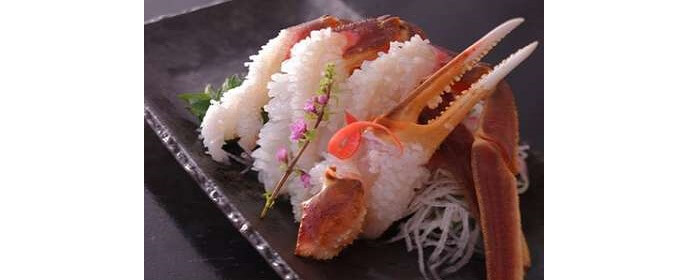
By the way, some conveyor belt sushi restaurants in Japan serve a kanikama sushi aside from crab sushi. A kanikama called crab stick, imitation crab meat or seafood stick is crab fishcake made from minced fish meat. Minced fish meat called surimi in Japan is becoming popular in the world because people prefer fish to meat is increasing.
Sugiyo Co., Ltd which is Japanese seafood products manufacturer is well known as the first company produced kanikama in 1974. There are various kanikama in Japan, Kaori-bako and Kani-chaimasse made by Sugiyo are very popular among them. In addition, Hobo-kani and Hobo-taraba made by Kanetetsu Delica Foods Inc. becomes popular since TV program. Celebrities choose kanikama by mistake on taste test of crab and kanikama in this TV program "Kakuzuke Check".
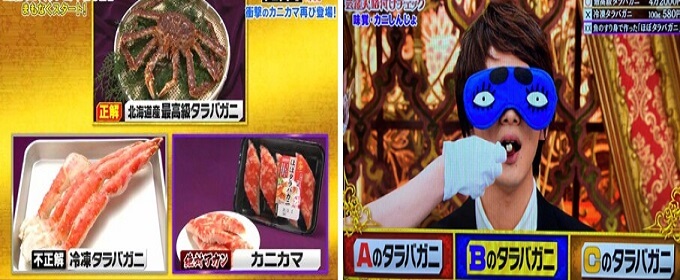
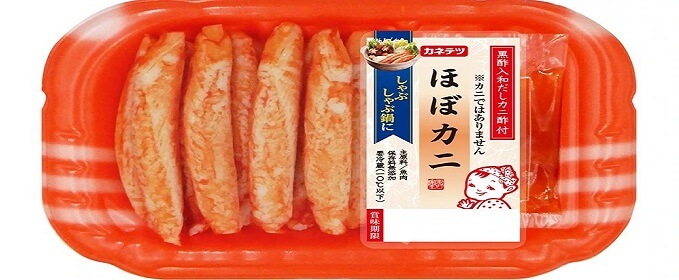
You can enjoy various crab dishes including sushi when you travel Japan. If you like sushi and conveyor belt sushi restaurant, you can invest it. Food and life companies (TYO:3563) and Kura Sushi Inc (TYO:2695) are listed in Tokyo Stock Exchange. If you like kanikama dishes, you can invest Maruha Nichiro Co. (TYO:1333) which is the one of the largest Japanese seafood companies in Japan. These companies are also included some ETFs for investing Japanese companies. Sugiyo and Kanetetsu are not listed in Tokyo Stock Exchange.
- Ikura and Sujiko are little different!?
- Shake means salmon, but they are different!?
- Various crab and crab dishes in Japan!?
- What is Kappa-maki and Kappa?
- Good-old sushi restaurants do not serve raw shrimp sushi!?
- Japanese eat various squid and squid dishes!?
- There are various toro, that is confusing!?
- Various tuna and tuna dishes in Japan!?
- There are various way to use wasabi!?
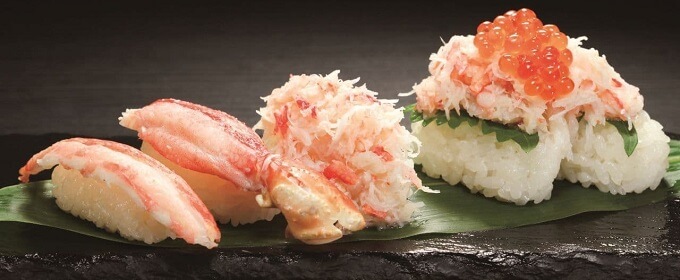
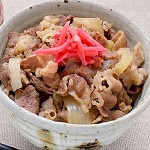 Gyudon
Gyudon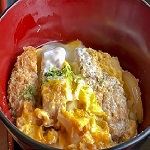 Katsudon
Katsudon Unadon
Unadon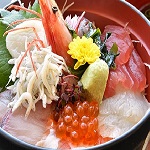 Kaisendon
Kaisendon